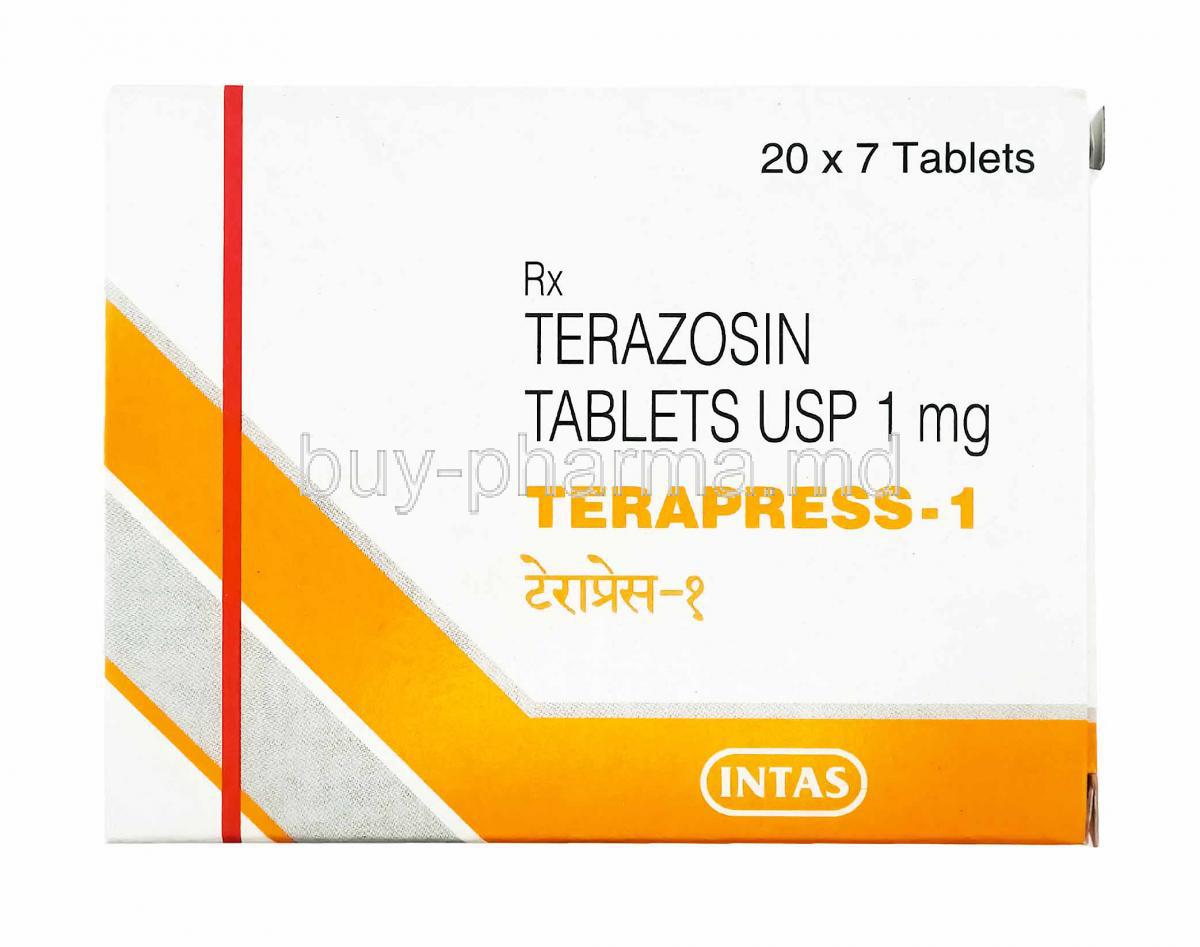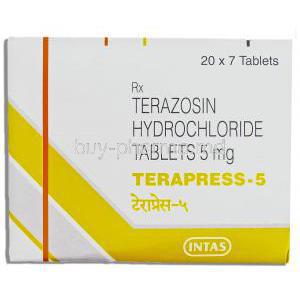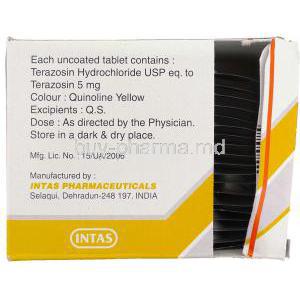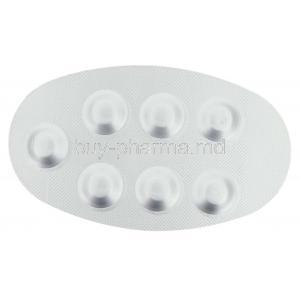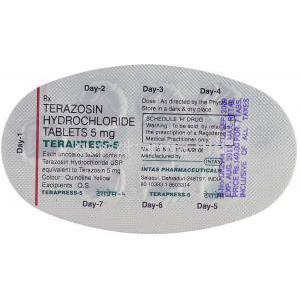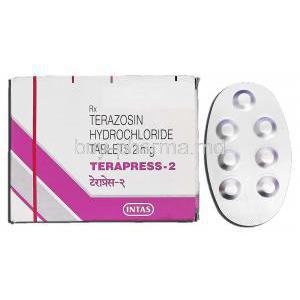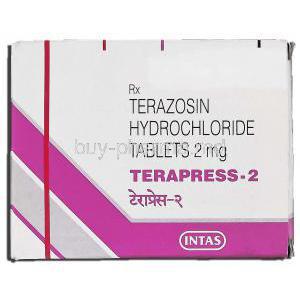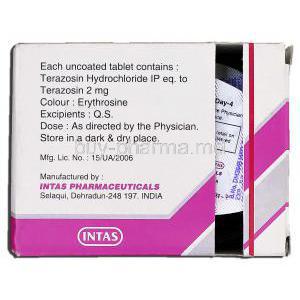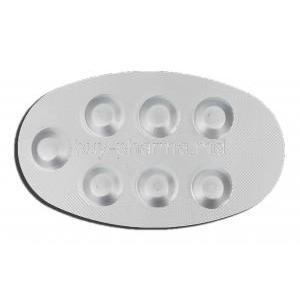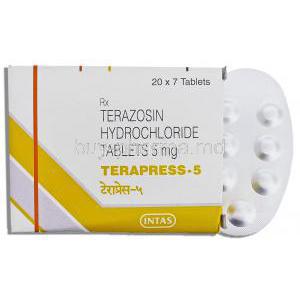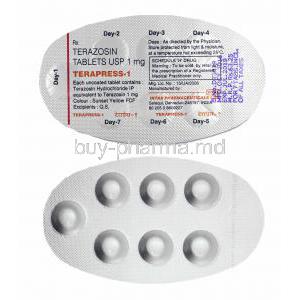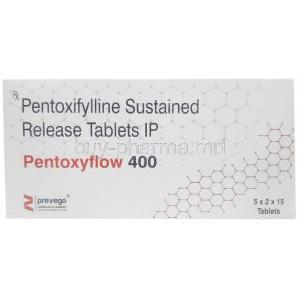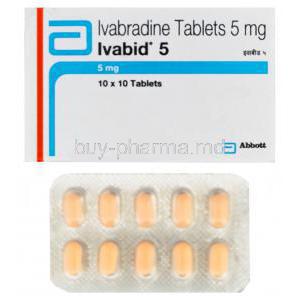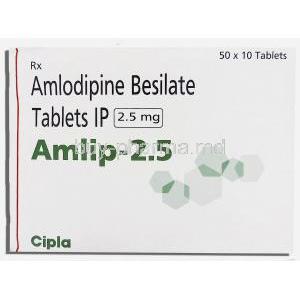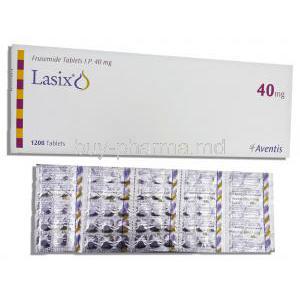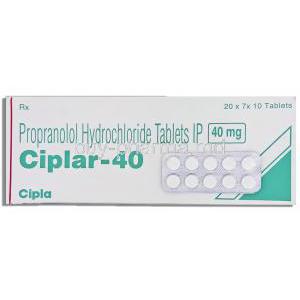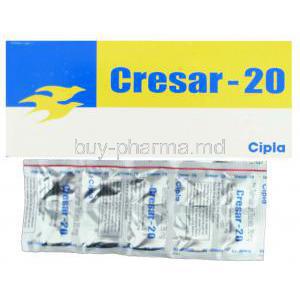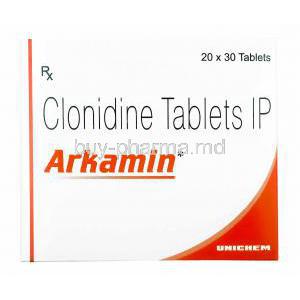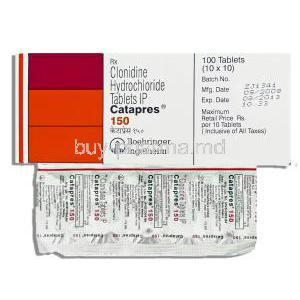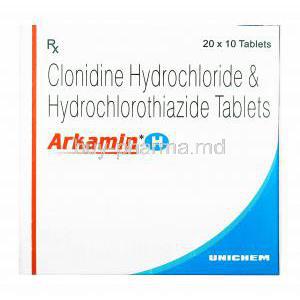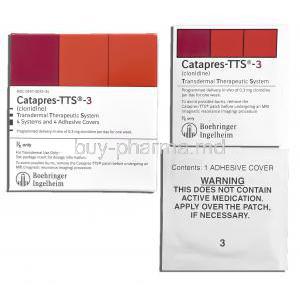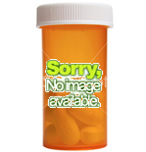Introduction to Terapress (Terazosin)
Overview of Terapress as a Prescription Medication
Terapress, known generically as terazosin, is a widely prescribed medication designed to ease urinary difficulties and regulate blood pressure. It is primarily utilized in men suffering from benign prostatic hyperplasia (BPH) as well as patients diagnosed with essential hypertension. Its dual therapeutic action makes it a vital component in long-term disease management.
Drug Classification: Alpha-1 Adrenergic Receptor Blocker
Terazosin belongs to the pharmacological class of alpha-1 adrenergic receptor blockers. This class of drugs exerts its therapeutic effect by relaxing specific smooth muscles, thereby reducing vascular resistance and easing urinary obstruction.
Historical Background and Medical Relevance
Introduced in the late 20th century, terazosin quickly gained prominence for its unique ability to simultaneously treat urological and cardiovascular conditions. Its medical relevance continues to be high, especially in aging populations where both hypertension and BPH frequently coexist.
Therapeutic Categories and Global Brand Availability
Terapress is marketed under several brand names globally, including its generic form. It is categorized under urology and cardiology therapeutics, making it a versatile prescription medication available in diverse healthcare settings worldwide.
Composition and Formulation
Active Ingredient: Terazosin Hydrochloride
The key therapeutic component is terazosin hydrochloride, which provides both vasodilatory and urinary flow-enhancing effects.
Available Strengths and Dosage Forms
Terapress is available in tablet form, typically in strengths of 1 mg, 2 mg, 5 mg, and 10 mg. These varying doses allow for gradual titration and individualized therapy.
Inactive Ingredients and Excipients
In addition to the active drug, the tablets contain excipients such as lactose, microcrystalline cellulose, and magnesium stearate to ensure stability, bioavailability, and proper dissolution.
Manufacturer and Brand Variations
Several pharmaceutical companies manufacture terazosin under different brand names, providing patients with multiple options depending on regional availability.
Mechanism of Action: How Terazosin Works
Alpha-1 Adrenergic Receptor Antagonism Explained
Terazosin works by selectively blocking alpha-1 adrenergic receptors located in vascular smooth muscle and the bladder neck. This inhibition prevents receptor-mediated contraction, resulting in relaxation and improved physiological function.
Effects on Smooth Muscle Relaxation in the Bladder Neck and Prostate
By relaxing the bladder neck and prostatic smooth muscle, terazosin significantly reduces urinary hesitancy, improves flow, and decreases residual urine volume in patients with BPH.
Impact on Vascular Smooth Muscle and Blood Pressure Regulation
The vasodilatory effect leads to decreased peripheral vascular resistance, contributing to lower blood pressure levels and improved hemodynamic stability.
Comparison with Other Alpha-Blockers
Compared to other agents in its class, terazosin has a longer duration of action, which allows for once-daily dosing. This convenience enhances patient adherence.
Approved Medical Uses
Management of Benign Prostatic Hyperplasia (BPH)
Terazosin is clinically indicated for the treatment of urinary symptoms associated with BPH. It improves urinary stream, decreases urgency, and alleviates nocturia.
Treatment of Essential Hypertension
As an antihypertensive agent, it reduces systolic and diastolic pressure through systemic vasodilation.
Symptom Relief in Lower Urinary Tract Obstruction
It provides symptomatic relief in patients experiencing urinary retention and incomplete bladder emptying caused by prostatic enlargement.
Dual Benefits in Patients with Both BPH and Hypertension
Patients suffering from both conditions gain compounded benefits, as one medication addresses two chronic disorders simultaneously.
Off-Label Uses of Terazosin
Adjunct Therapy for Kidney Stone Expulsion
Terazosin has been investigated for facilitating stone passage by relaxing ureteral smooth muscle, reducing pain and improving clearance rates.
Management of PTSD-Related Nightmares
Clinical studies suggest its efficacy in reducing trauma-induced nightmares by modulating adrenergic signaling during sleep.
Possible Role in Chronic Prostatitis and Bladder Dysfunction
Research indicates a potential benefit in relieving pelvic pain and urinary frequency associated with chronic prostatitis and bladder dysfunction.
Experimental Use in Raynaud’s Phenomenon
Its vasodilatory properties may improve peripheral circulation, making it a candidate for alleviating symptoms of Raynaud’s phenomenon.
Dosage and Administration
Recommended Starting Dose and Titration Schedule
The usual initial dose is 1 mg at bedtime to minimize dizziness or fainting. Gradual titration is necessary to reach therapeutic levels.
Individualized Dosing for BPH and Hypertension
For BPH, dosing may increase to 5–10 mg daily. For hypertension, adjustments are based on patient response and blood pressure monitoring.
Maximum Daily Dose Limits
The maximum recommended dose is 20 mg per day. Exceeding this may increase the risk of severe hypotension.
Guidance on Missed Dose and Discontinuation
If a dose is missed, it should be taken as soon as remembered unless the next dose is near. Discontinuation should be gradual to avoid rebound hypertension.
Administration with or Without Food
Terazosin can be administered with or without meals. However, taking it at the same time daily is recommended for consistency.
Side Effects of Terapress
Overview of Potential Adverse Effects
Like all medications, terazosin may cause unwanted effects, ranging from mild discomfort to rare but severe reactions. Patients should be closely monitored during initial therapy and dosage adjustments.
Common Side Effects
- Dizziness and lightheadedness, especially upon standing
- Fatigue and general drowsiness
- Nasal congestion and rhinitis
- Gastrointestinal disturbances such as nausea or constipation
Serious Side Effects
- Orthostatic hypotension leading to fainting episodes
- Palpitations, tachycardia, or irregular heartbeat
- Priapism, a rare but potentially dangerous prolonged erection
- Severe allergic reactions including rash, swelling, and difficulty breathing
Drug Interactions
Interactions with Antihypertensive Agents (Beta-Blockers, Calcium Channel Blockers)
When terazosin is co-administered with other antihypertensive medications such as beta-blockers or calcium channel blockers, the blood pressure-lowering effects may be amplified. This synergistic impact can sometimes precipitate profound hypotension, especially in patients with baseline low blood pressure.
Risk of Additive Hypotension with PDE5 Inhibitors (Sildenafil, Tadalafil)
Phosphodiesterase type 5 inhibitors, commonly prescribed for erectile dysfunction, can significantly enhance the hypotensive effect of terazosin. Patients taking sildenafil, tadalafil, or similar agents should be carefully monitored to avoid sudden drops in blood pressure and associated risks such as syncope.
Interference with Diuretics and Nitrates
Diuretics increase fluid loss and nitrates promote vasodilation, both of which may intensify the hypotensive potential of terazosin. Concomitant use requires dose adjustments and vigilant monitoring to safeguard against severe cardiovascular complications.
Potential Effects with CNS Depressants and Alcohol
Combining terazosin with central nervous system depressants or alcohol can cause excessive drowsiness, dizziness, and compromised alertness. This interaction heightens the risk of accidents, particularly in individuals operating machinery or driving.
Cytochrome P450 Metabolism Considerations
Although terazosin undergoes limited hepatic metabolism, medications influencing the cytochrome P450 system may alter plasma concentrations. Clinicians should remain cautious when prescribing concurrent therapies that are strong inducers or inhibitors of hepatic enzymes.
Warnings and Contraindications
Contraindications
- Known hypersensitivity to terazosin or structurally related compounds.
- History of severe orthostatic hypotension where fainting episodes were recurrent.
Important Warnings
- First-dose phenomenon: The initial dose may provoke pronounced hypotension and fainting. Patients are advised to take the first dose at bedtime.
- Caution in patients with heart failure: Terazosin’s vasodilatory action may worsen fluid retention and compromise cardiac stability.
- Risk of intraoperative floppy iris syndrome: Patients undergoing cataract surgery should inform their ophthalmologist, as terazosin may complicate surgical procedures.
Careful Administration and Precautions
Stepwise Dose Escalation to Minimize Hypotension Risk
Dosing must begin at the lowest available strength, with gradual escalation. This approach reduces the likelihood of sudden blood pressure drops and enhances treatment tolerability.
Monitoring Requirements for Blood Pressure and Heart Rate
Regular monitoring ensures timely identification of hypotension, tachycardia, or other cardiovascular responses. Clinical follow-up is particularly critical during dose initiation and adjustments.
Precautions for Patients with Hepatic or Renal Impairment
Impaired liver or kidney function can alter drug clearance, necessitating lower doses or extended dosing intervals. Medical supervision is mandatory for these patients.
Advice on Driving and Operating Machinery
Since dizziness and drowsiness are common, patients should avoid hazardous activities until their individual response to the drug is clearly established.
Lifestyle Considerations to Reduce Side Effects
- Avoid abrupt position changes to prevent orthostatic dizziness.
- Limit alcohol intake to minimize additive sedation.
- Stay hydrated to support stable blood pressure.
Use in Special Populations
Administration in Elderly Patients
Elderly individuals are more sensitive to terazosin-induced orthostatic hypotension. Lower starting doses and cautious titration are recommended, along with close clinical monitoring.
Administration in Pregnant Women and Nursing Mothers
Data on safety during pregnancy remain limited. The medication should be used only if clearly necessary, under strict medical supervision. Since small amounts may pass into breast milk, breastfeeding women are advised to consult their healthcare provider before use.
Administration in Children
Terazosin is not routinely recommended in pediatric populations due to insufficient safety and efficacy data. Off-label use should only occur under specialist supervision in exceptional cases.
Overdosage and Emergency Management
Symptoms of Terazosin Overdose (Severe Hypotension, Shock)
Excessive dosing may trigger dangerously low blood pressure, rapid heart rate, extreme dizziness, and in severe cases, circulatory shock.
Recommended Immediate Interventions
Supportive care begins with placing the patient in a supine position and maintaining airway patency. Intravenous fluids may be required to restore blood pressure.
Supportive and Symptomatic Treatment Options
Vasopressors may be administered if fluids are insufficient. Symptomatic management should address arrhythmias, fainting episodes, and other cardiovascular complications.
Hospitalization and Monitoring Protocols
In cases of overdose, hospital admission is warranted. Continuous monitoring of vital signs, cardiac rhythm, and renal function ensures patient safety until recovery.
Storage and Handling Precautions
Recommended Storage Conditions (Temperature, Humidity, Light)
Store terazosin tablets at room temperature, ideally below 25°C, in a dry environment protected from direct sunlight.
Shelf Life and Expiry Considerations
Expired medication may lose efficacy or pose risks. Patients should always check packaging for the expiration date before use.
Safe Handling and Disposal of Unused Tablets
Unused or expired tablets should not be discarded in household waste. Pharmacy take-back programs or medical disposal methods are preferable.
Keeping Medication Away from Children and Pets
All medications should be kept in secure, inaccessible places to prevent accidental ingestion by children or animals.

